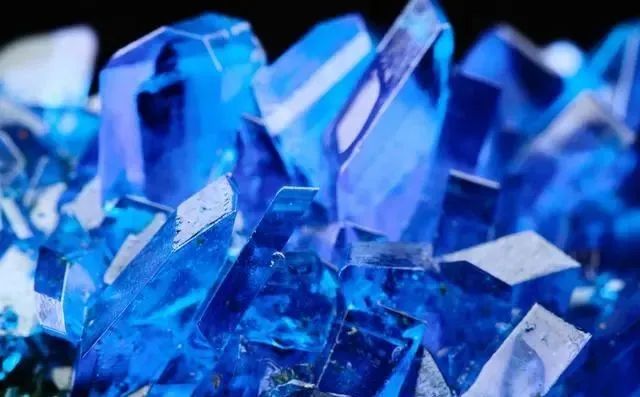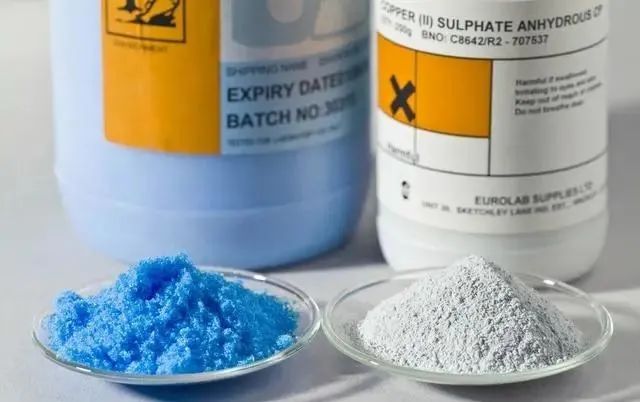Copper sulfate is relatively unfamiliar to consumers, but it is not unfamiliar to aquaculture farmers because it has a wide range of applications in aquaculture.
Although copper sulfate is a drug commonly used by everyone, many friends are not very clear about some usage and characteristics, so I will briefly introduce it here.

Properties of Copper Sulfate
Copper sulfate is an inorganic compound with the chemical formula CuSO4. It is white or off-white powder.
The aqueous solution of copper sulfate is weakly acidic and blue. When it recrystallizes, it will produce blue copper sulfate pentahydrate (CuSO4 5H2O, also known as bile alum), which is actually copper sulfate pentahydrate that we commonly use in aquaculture.
Copper sulfate belongs to heavy metal salts, and its hydrolyzed copper ions can combine with proteins to form protein salts, which have a strong poisonous effect on protozoa and colloidal algae.
We also mostly use this principle in aquatic products. At the same time, copper is also an essential element in animals and therefore acts as an additive.
Copper sulfate also has many applications in other fields, such as insecticide and fungicide in fruit and vegetable cultivation, analytical reagent in chemical field, emetic in medical field, chelating agent in food, etc.

Application of copper sulfate in aquaculture
In aquaculture, we still use a lot of metal salts, and copper sulfate is indeed the most commonly used one. Why is it so popular? The main reason is that it is cheap, effective, and relatively low in toxicity, which is safe for operators and has little impact on food safety. So what are its applications?
1. Copper-iron mixture to kill insects (the ratio of copper sulfate to ferrous sulfate is 5:2), this is a classic formula in aquaculture, I believe many farmers have used it, and some people will also use some surface water on this basis Active agents are used to increase the efficacy of the drug, and this method is mostly used to kill some smaller protozoa (trichotillomantis, oblique tube worm, etc.).
2. Control algae color. In the middle and late stages of fish farming, the color of algae in many ponds will be too thick. In the previous operation methods, most of them used copper sulfate to kill them. Biodilute water.
3. Clarify chelation. In the process of fish farming, the water body will be turbid. Some farmers will use an appropriate amount of copper sulfate to clarify the water body. The reasons for this process are complicated, and the effect is worse than that of special water purification flocculants. Use Copper sulfate is mainly mixed with some bactericidal and insecticidal effects.
4. Feed additives. Although copper sulfate is widely used as a medicine, it is also an important feed additive in the feed production process, because copper ions are an important component element of living organisms, especially in the cultivation of shrimp and crabs, because shrimp Copper ions are required in the hemocyanin of crabs.
5. Solid scales add color. This application is currently only used by a small number of people, especially when the farmed fish is found to be intolerant to stress when it is sold. Using an appropriate amount of copper sulfate can make the scales of the fish look firmer and more shiny.3

Precautions for use of copper sulfate
1. Copper sulfate is operated according to a strict ratio in feed production, and generally there will be no safety problems. However, it is difficult to control the dose control in the process of killing insects and treating water quality, and it is easy to cause some adverse consequences.
2. There are many influencing factors of copper sulfate, and it will be affected by factors such as algae color, organic matter concentration, water temperature and water depth when killing insects. The more organic matter, the denser the algal color, the worse the drug effect, and the higher the water temperature, the better the drug effect. There must be a certain difference in the concentration between winter and summer, and when the water depth exceeds 2 meters in summer, the reaction of aquatic animals must be paid attention to.
3. Different aquaculture organisms have different dosages. Different fish have different tolerances to the same drug, so more information should be consulted when using drugs.
4. When the amount is too large, the breeding animals will appear uneasy or even reduce the food intake. At this time, it is necessary to change the water in time, reduce stress, and use organic acids for interpretation and other operations such as chelation.
Since copper sulfate has a certain algicidal effect, it is necessary to pay attention to strengthening oxygenation when using it.

The effect of copper sulfate
Although copper sulfate is effective and cheap, most of the copper sulfate we buy in fish pharmacies is industrial copper sulfate, which may contain heavy metals such as arsenic, lead, and cadmium, which will cause food safety problems for farmed aquatic products.
In addition, copper sulfate has a certain accumulation toxicity in organisms. When copper sulfate is frequently used in fish ponds, it will cause liver and kidney damage in fish, and then affect growth.
Third, due to the long-term use of copper sulfate in a large amount, the copper content in the water body of the outer river and the sea will be too high, which will affect the ecological security.